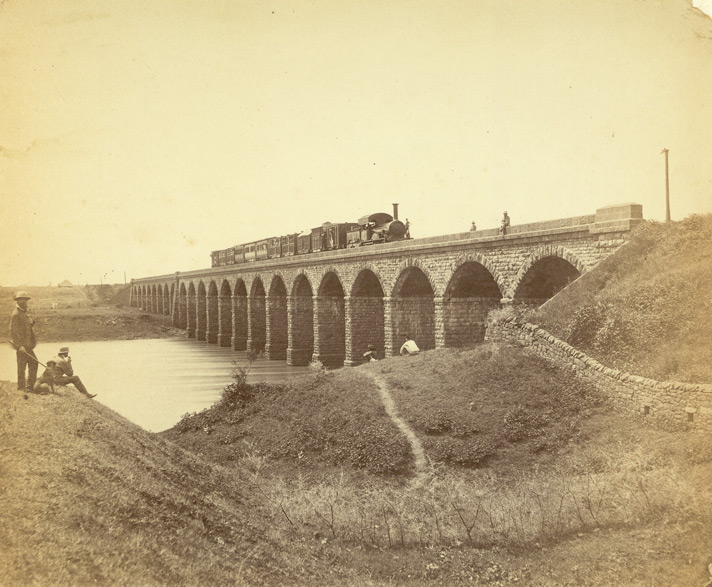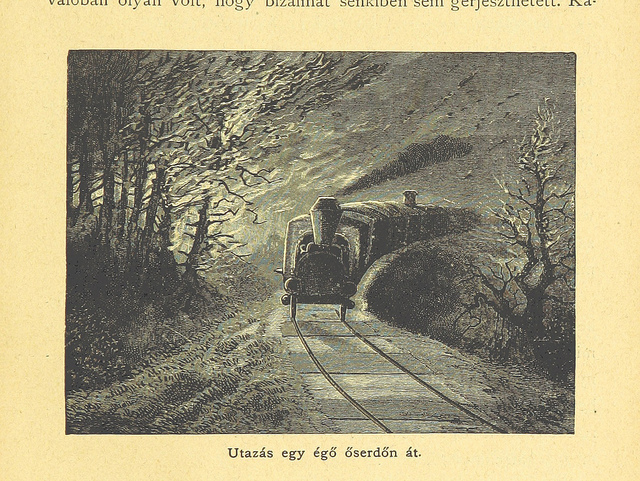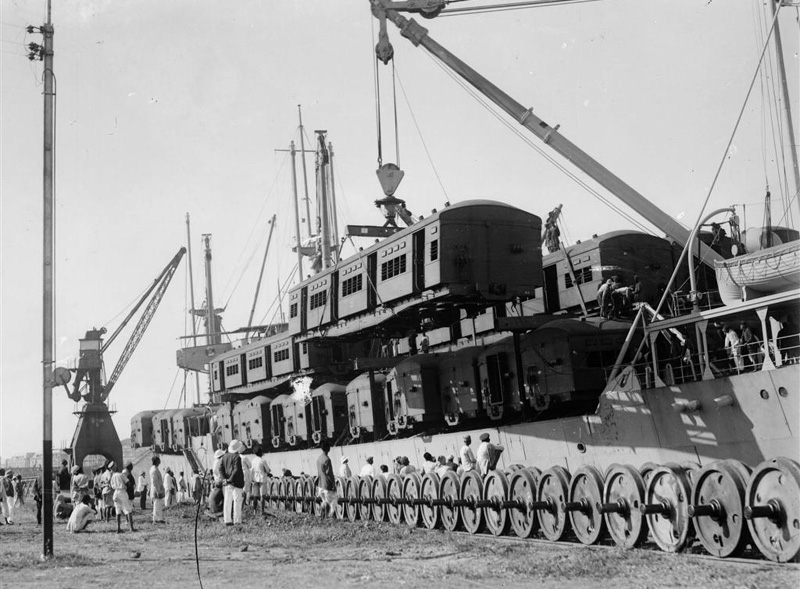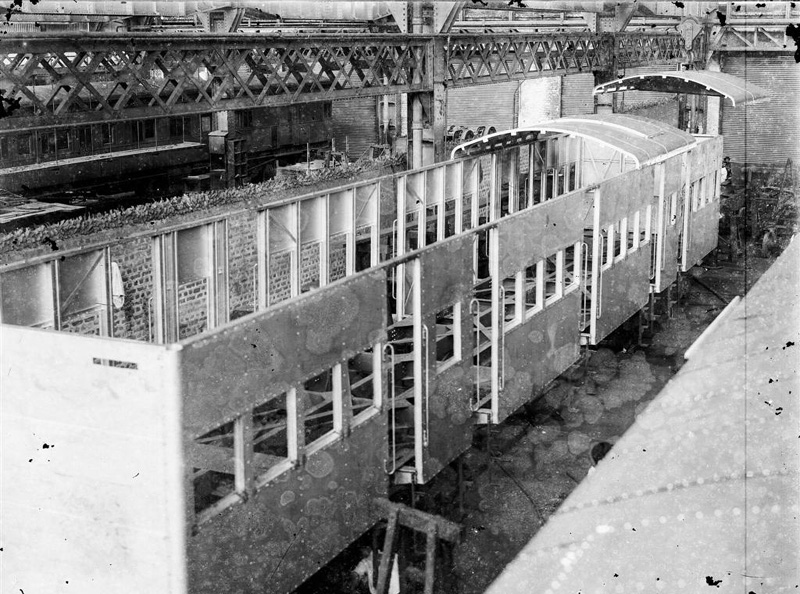
A passenger train travelling from Bombay to Tannah, 1855. Photograph titled, 'Dapoorie Viaduct [Bombay].'

Beyer, Peacock and Company. Madras Railway (India) '0-4-2' tank locomotive Order No 425, 1860. Image from Museum of Photographic Arts.
The government began to earnestly merge several private and public companies working in rail transport only after Independence. Until 1905, the public works department nominally regulated the other companies, namely those belonging to princely states and private companies. After this, a separate railway board was created.

Travel to a burning jungle, 1882. Image taken from page 1041 of ‘Gróf Széchenyi Béla keleti utazása India, Japan, China, Tibet és Birma országokban. (1878-80) ... Magyar kiadás. 200 ... képpel, etc'.

Bhore Ghat Railway, 1890. Image taken from page 61 of '[Pictorial tour around India; with remarks on India past and present, alleged and true causes of Indian poverty, supposed or real, twelve means available for promoting the wealth of the country, etc.]'
But in 1921, the Acworth Committee, realising the potential mess of several rail companies operating all at once within the government budget, recommended that railway finances be separated from that of the government’s.
The railways, it said, should be responsible for its own profits and losses, and to emphasise this, the railway budget would be presented by the member of Parliament in charge of railways and not by the finance minister.
In 1925, the government presented India’s first rail budget to the legislative assembly.

Himalayan Railway Train, 1891. Image taken from page 31 of 'On India's Frontier; or Nepal, the Gurkhas' mysterious land'.

Ad for the Great Indian Peninsular Railway for Poona races.

Third-class passengers, 1896. Image taken from page 243 of 'From the Black Sea through Persia and India ... Illustrated by the author'.
And as Mumbai's suburban railways hope that the central government will be kind to them in the budget – overhead bridges, functional toilets and reducing the alarming gap between platforms and trains top the list – these images, collected by train enthusiast and journalist Rajendra Aklekar from the Western Railway's archive of photographs, depict Mumbai's trains as they developed after Independence from just two tracks to a complicated system of trains.







Limited-time offer: Big stories, small price. Keep independent media alive. Become a Scroll member today!
Our journalism is for everyone. But you can get special privileges by buying an annual Scroll Membership. Sign up today!